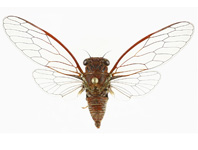Abstract
A new genus, Cyathoshiva, of free-living marine nematodes from the subfamily Cyatholaiminae (family Cyatholaimidae, order Chromadorida), is described from the Indian coast. The new genus differs from other known Cyatholaiminae genera in having a unique combination of morphological characters: buccal cavity with well-developed dorsal tooth and two subventral teeth, proximally unpaired gubernaculum and non-cup shaped supplements. The type species Cyathoshiva amaleshi gen. n. sp. n. is characterized by having multispiral amphids with 4.5 turns, punctated cuticle with a weak lateral differentiation, a conical tail, three supplements possessing both tubular and setoid parts, and a gubernaculum with a serrated and dentate distal end.
References
Bastian, H.C. (1865) Monograph on the Anguillulidae, or Free Nematoids, Marine, Land and Freshwater, with description of 100 new species. The Transactions of the Linnean Society of London, XXV (Part II), 73–184.
http://dx.doi.org/10.1111/j.1096-3642.1865.tb00179.xBussau, C. (1993) Taxonomische und ökologische Untersuchungen an Nematoden des Peru–Beckens. Ph. D. Thesis submitted to Christian-Albrechts-Universität zu Kiel, Kiel, 621 pp.
Chesnin, L. & Yien, C.H. (1951) Turbidimetric determination of available sulphates. Soil Science Society of America Proceedings, 15, 149–151.
http://dx.doi.org/10.2136/sssaj1951.036159950015000C0032xChitwood, B.G. (1933) A revised classification of the Nematoda. The Journal of Parasitology, 20, 131.
Coull, B.C. (1973) Estuarine meiofauna – A review, trophic relationships and microbial interactions. In: Stevenson, L.H. & Colwell, R.R. (Eds.), Estuarine Microbial Ecology. University of South Carolina Press, Columbia, pp. 499–511.
De Coninck, L.A. (1965) Classe des Nématodes – Systématique des Nématodeset sous–classe des Adenophorea. In: Grasse, P. (Ed.), Traité de Zoologie. Vol. 4. Pts. 2/3, Masson et Cie, Paris, pp. 586–681.
Decraemer, W. & Smol, N. (2006) Orders Chromadorida, Desmodorida and Desmoscolicida. In: Eyualem-Abebe, A., Traunspurger, W. & Andrássy, I. (Ed.), Freshwater Nematodes: Ecology and Taxonomy. CAB International, Wallingford, pp. 497–573.
http://dx.doi.org/10.1079/9780851990095.0497Filipjev, I.N. (1918) Svobodnozhivushchiya Morskiya Nematody Okrestnostei Sevastopolya. Trudy Osoboi Zoologicheskoi Laboratorii I Sevastopol Skoi Biologicheskoi Stantsii Rossiiskoi Akademii Nauk, 2, 1–350.
Gerlach, S.A. & Riemann, F. (1973) The Bremerhaven Checklist of Aquatic Nematodes. Veröffentlichungen des Instituts für Meeresforschung in Bremerhaven, 4 (Supplement), Heft 1, 1–404.
Hooper, D.J. (1986) Handling, fixing, staining and mounting nematodes. In: Southey, J.F. (Ed.), Laboratory Methods for Work with Plant and Soil Nematodes. Her Majesty's Stationery Office, London, pp. 59–80.
Hopper, B.E. (1977) Marylynnia, a new name for Marylynia of Hopper, 1972. Zoologischer Anzeiger, 198, 139–140.
Huang, Y. & Xu, K. (2013) Two new species of the genus Paracyatholaimus Micoletzky (Nematoda: Cyatholaimidae) from the Yellow Sea. Journal of Natural History, 47 , 1381–1392.
http://dx.doi.org/10.1080/00222933.2012.752544Huang, Y. & Zhang, Z. (2007) A new genus and new species of free–living marine nematodes from the Yellow Sea, China. Journal of the Marine Biological Association of the United Kingdom, 87, 717–722.
http://dx.doi.org/10.1017/S002531540705432XInglis, W.G. (1963) New Marine Nematodes from off the Coast of South Africa. Bulletin of the British Museum (Natural History), Zoology, 10, 531–552.
http://dx.doi.org/10.5962/bhl.part.20531Micoletzky, H., (1924) Letzter Bericht uber freilebende Nematodenaus Suez. Sitzungsberichten der Akademie der Wissenschaften in Wien (I), 132, 225–262.
Miljutina, M.A. & Miljutin, D.M. (2015) A revision of the genus Paracanthonchus (Cyatholaimidae, Nematoda) with a tabular key to species and a description of P. mamubiae sp. n. from the deep North-Western Pacific. Deep-sea Research II, 111, 104–118.
http://dx.doi.org/10.1016/j.dsr2.2014.08.002Murphy, D. G. (1963) A new genus and two new species of nematodes from Newport, Oregon. Proceedings of the Helminthological Society of Washington, 30, 73–78.
Olsen, S.R., Cole, C.V., Watanabe, F.S. & Dean, L.A. (1954) Estimation of Available phosphorus in soils by extraction with sodium bicarbonate. Circular/ U.S. Department of Agriculture, 1954, 939.
Schuurmans-Stekhoven, J.H. Jr. (1942) The free living nematodes of the Mediterranean. III. The Balearic Islands. Zoölogische Mededeelingen, 23, 229–262.
Schuurmans-Stekhoven Jr., J.H. (1950) The Free living Marine Nemas of the Mediterranean I. The Bay of Villefranche. Mémoires Institut Royal Des Sciences Naturelles de Belgique, 2, 1–220.
Sharma, J. &Vincx, M. (1982) Cyatholaimidae (Nematoda) from the Canadian Pacific coast.Canadian Journal of Zoology, 60, 271–280.
http://dx.doi.org/10.1139/z82-036Tchesunov, A.V. (2014) Order Chromadorida Chitwood, 1977. In: Schmidt-Rhaesa, A. (Ed.), Handbook of Zoology: Gastrotricha, Cyaloneuralia, Gnathifera. Vol 2. Nematoda. DeGruyter, Berlin, pp. 373–398.
Tchesunov, A.V. (2015) Free-living nematode species (Nematoda) dwelling in hydrothermal sites of the North Mid-Atlantic Ridge. Helgoland Marine Research, 69, 343–384.
http://dx.doi.org/10.1007/s10152-015-0443-6Walkley, A.J. & Black, I.A. (1934) An examination of the Degtjareff method for determining soil organic matter, and a proposed modification of the chromic acid titration method. Soil Science, 37, 29–38.
http://dx.doi.org/10.1097/00010694-193401000-00003Wieser, W. (1953) Die Beziehungzwischen Mundhöhlengestalt, Emährungsweise und Vorkommenbeimarinen Nematoden. Arkivfür Zoologie, 4, 439–484.

